DX4WIN.CTY #22.6 – 06 February 2022
N3FJP – 06 February 2022
Big CTY – 06 February 2022
CTY-3206 – 06 February 2022
Tonight @ 8 – Russian Woodpecker over the horizon radar
Scheduled system downtime – RSGB email system
Radio New Zealand (Early 1970’s)
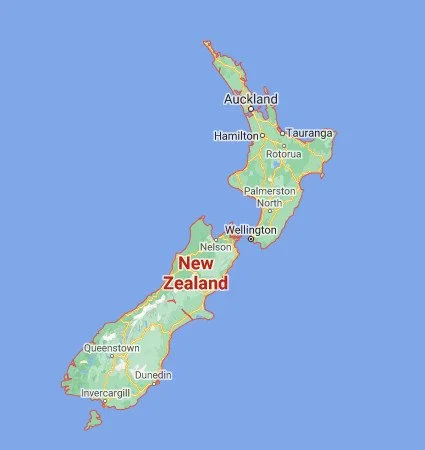
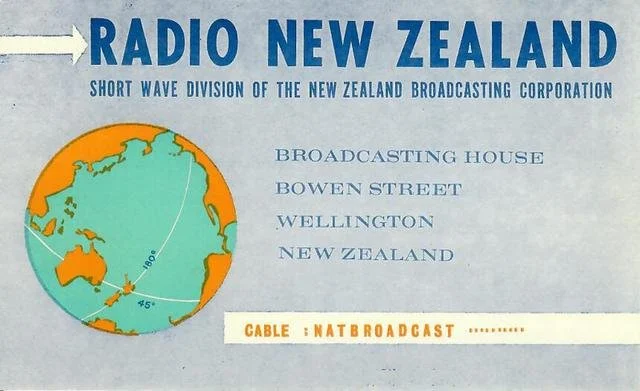
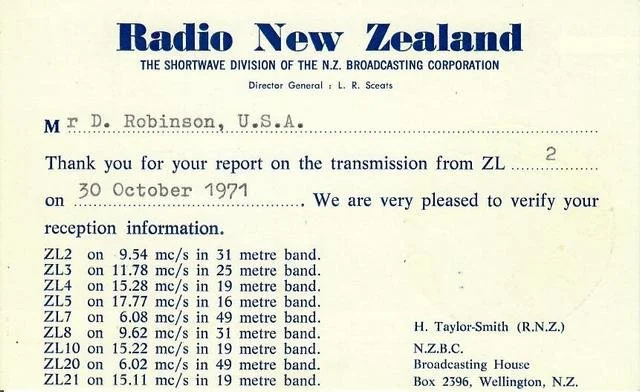
In 2022, one station in the South Pacific remains on shortwave, to the great delight of shortwave listeners. That station is Radio New Zealand, which as of early 2022 could still be heard with good signals. Back in the 1970’s Radio New Zealand was a prime DX target. Its sign on at 0600 UTC required staying up until 2:00 AM in summer months. For signs of good Pacific propagation, DX’ers often used VNG, the former time signal station in Australia, as a marker. If VNG was coming in well, then New Zealand and Tahiti were likely to be coming in well. It’s hard to explain the feeling a new SWL got hearing Radio New Zealand in those days. At a power of 7.5 kilowatts, the station listed on its QSL card (shown here) 9 frequencies, including 9.54 mHz and 11.780 mHz where I used to hear them. Other frequencies in 1971 were 15.280, 17.770, 6.080, 9.620, 15.220, 6.020, and 15.110 mHz for ZL2/3/4/5/7/8/10/20 and 21 call letters. The verification signer was H. Taylor-Smith at NZBC Broadcasting House in Wellington. Hearing this 7.5 kilowatt signal, with its characteristic fading as the signal made its way the many thousands of miles to Pennsylvania, was a real thrill. Here is the 1971 recording of Radio New Zealand, from sign on with its “Bellbird” interval signal and BBC news relay.
LV de Mosquitia (Honduras) 1981
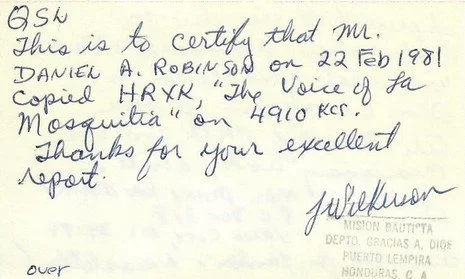
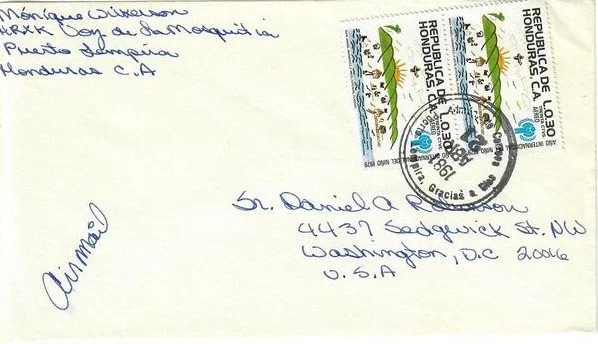
In 1981, a small U.S.- supported station called La Voz de Mosquitia (HRXK) went on air from Puerto Lempira, Honduras. The frequency was 4,910 khz — and it was plagued by interference from other Latin American stations in the 60 meter band. A good write up about the station can be found here. This recording was made in Washington, DC using a Hammarlund HQ-180A receiver. The plain QSL card shown here was signed by Reverend Landon Wilkerson, an independent Baptist Missionary, who spent seventeen years in Honduras with his wife and family helping the Miskito Indians.

